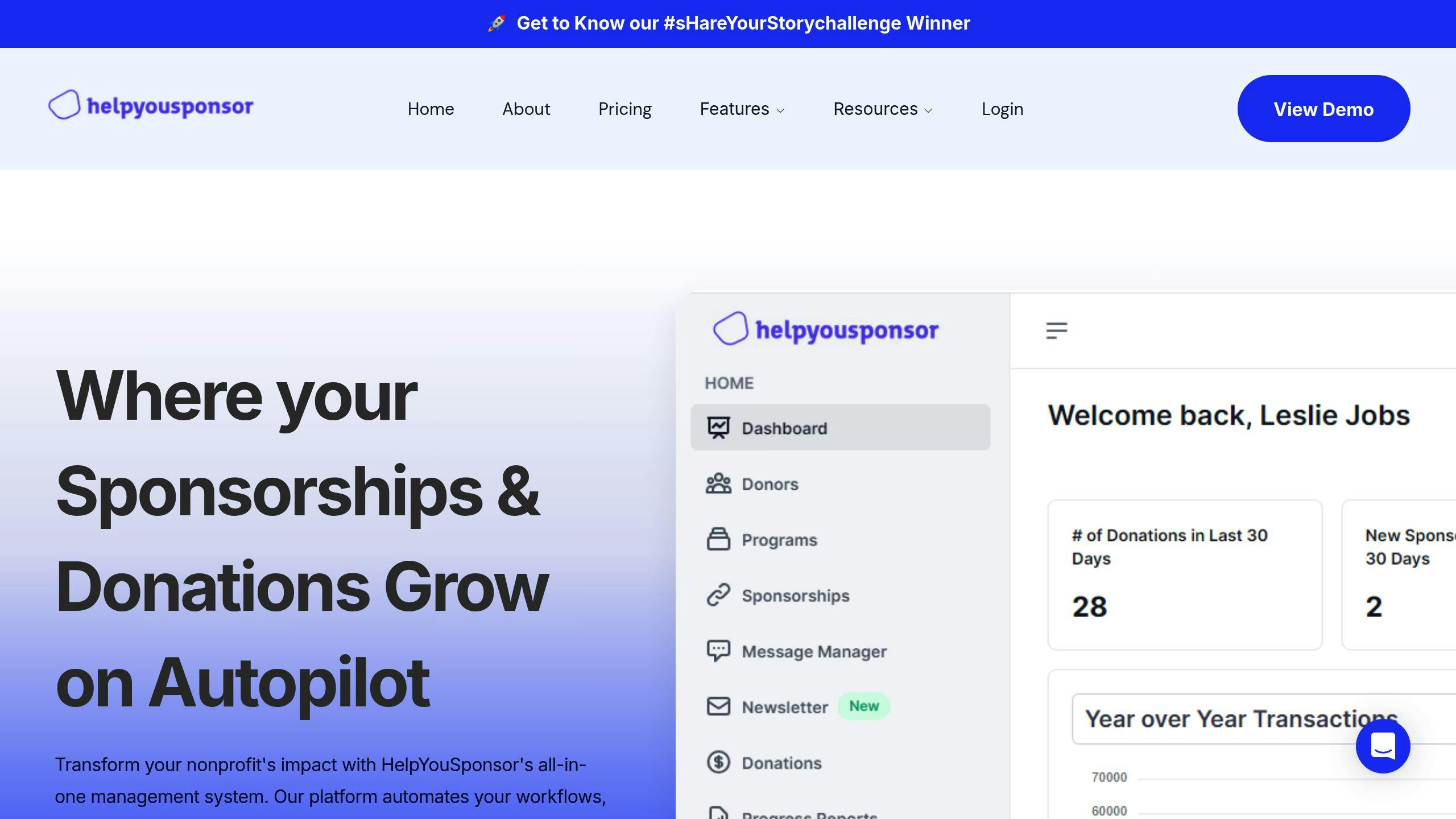Digital Transformation Roadmap for New Nonprofits
Explore essential strategies for nonprofits to harness digital tools, enhance fundraising, and streamline operations effectively.

Nonprofits adopting digital tools can boost fundraising, streamline operations, and improve program delivery. Yet, only 1 in 8 nonprofits globally achieve high digital integration. Here's how to start:
- Evaluate Digital Readiness: Assess staff skills, tech infrastructure, and data management practices.
- Set SMART Goals: Focus on efficiency, donor engagement, and service impact.
- Choose Essential Tools: CRM (e.g., Salesforce Nonprofit Success Pack), fundraising platforms (e.g., Classy), and project management software (e.g., Trello).
- Leverage Data: Use donor insights to refine strategies while ensuring data security.
Quick Comparison of Digital Tools for Nonprofits
| Purpose | Recommended Tools | Features |
|---|---|---|
| Donor Management | Salesforce Nonprofit Success Pack | Tracks relationships |
| Fundraising | Classy, HelpYouSponsor | Campaign management |
| Communication | Mailchimp | Email and outreach tools |
| Project Management | Trello | Task and team organization |
Start by identifying gaps, setting priorities, and implementing scalable tools to align with your mission.
Nonprofit Digital Transformation: Prepare for the Digital Future of Fundraising
Measuring Current Digital Status
Understanding your nonprofit's current digital strengths and weaknesses is key to identifying areas for improvement and making the most of your resources. By taking a close look at your digital capabilities, you can better prioritize efforts and focus on what matters most.
Digital Skills Assessment
Start by examining your team's technology skills and your organization's digital infrastructure. Here's a breakdown of what to evaluate:
| Assessment Area | Key Elements to Evaluate |
|---|---|
| Staff Skills | Technical abilities, familiarity with tools, training needs |
| Technology Infrastructure | Existing software, hardware, and how well they integrate |
| Data Management | Methods for collection, storage systems, and security measures |
| Digital Communications | Online presence, use of social media, and stakeholder interaction |
Involving your entire team in this assessment ensures a full understanding of your digital readiness while encouraging active participation. This process can also uncover opportunities for training or affordable tools to bridge gaps in skills or resources.
Remember, digital transformation is an ongoing process. Once you have a clear picture of your current state, you can move on to setting clear and actionable goals.
Planning Digital Goals
Define goals that are specific, measurable, achievable, relevant, and time-bound (SMART). Focus on areas that align with your mission, such as:
| Goal Category | Implementation Focus |
|---|---|
| Operational Efficiency | Simplify internal processes and workflows |
| Donor Engagement | Strengthen digital outreach and fundraising efforts |
| Program Impact | Use technology to improve service delivery |
| Data Analytics | Leverage data for better decision-making |
Break larger goals into smaller, achievable steps. For example, if you're looking to enhance donor engagement, start by implementing a basic CRM tool before moving on to advanced systems. Tools like Smartsheet can help you track progress and stay organized [5]. Regular reviews will ensure your efforts remain focused and flexible.
Once your goals are set, the next step is choosing the right digital tools to help you achieve them.
Setting Up Digital Tools
After evaluating your current digital landscape and setting clear goals, it's time to choose tools that match your nonprofit's mission.
Essential Nonprofit Software
To run smoothly, every nonprofit needs a set of core tools. These tools are the foundation for managing operations and reaching objectives effectively.
| Category | Purpose | Recommended Tools |
|---|---|---|
| Donor Management | Manage donor relationships | Salesforce Nonprofit Success Pack |
| Fundraising | Handle donations and campaigns | Classy, HelpYouSponsor |
| Communication | Facilitate stakeholder communication | Mailchimp |
| Project Management | Organize teams and tasks | Trello |
Research shows that 80% of nonprofits believe technology has helped them achieve their mission more effectively.
Once you've identified the tools your nonprofit needs, the next step is finding solutions that align with your specific requirements.
How to Choose the Right Software
When picking software for your nonprofit, focus on these important factors:
- Integration: Look for tools that work well with your current systems to avoid unnecessary complications.
- Cost: Take advantage of nonprofit discounts or free plans. For instance, HelpYouSponsor offers a free option for smaller organizations starting out.
- Scalability: Choose tools that can grow alongside your nonprofit as it expands.
Spotlight on HelpYouSponsor

HelpYouSponsor simplifies donor management, automates communication, and supports various sponsorship programs, all in one platform.
"Digital transformation is not a destination; it is a continuous journey of adaptation and evolution." - Forbes
To get the most out of your tools, invest in training your team. Regular feedback and tracking performance are crucial to ensuring these solutions provide the results you need. Don't overlook data security - keep software updated and comply with privacy regulations.
Once you've got the right tools in place, the next step is using data effectively to achieve your goals.
Using Data for Results
Managing data effectively not only strengthens connections with donors but also supports smarter decision-making - key to thriving in the digital age. For example, clean data can increase email open rates by 82% and click-through rates by 75%.
Donor Data Management
| Data Category | Key Information | Purpose | Action Steps |
|---|---|---|---|
| Basic Details | Contact info, communication preferences | Tailored outreach | Audit database quarterly |
| Engagement History | Past donations, event attendance | Understand donor journey | Automate data entry |
| Professional Info | Employment, affiliations | Spot partnership opportunities | Update regularly |
| Communication Metrics | Email opens, social media interactions | Refine outreach strategies | Segment donors |
Data naturally becomes outdated - about 30% of it each year - leading to less reliable insights if not maintained.
"When nonprofits invest in the right donor management tools and use them properly, they can become an incredible asset." - WildApricot
Data Protection Steps
Nonprofits are frequent targets for data breaches, making donor data security a top priority. With 41% of nonprofit professionals citing limited staff capacity as a challenge, automated security measures are a practical solution.
Here are key steps to protect donor data:
-
Security Framework
- Use encryption, secure payment systems, and conduct regular audits.
- Tokenize sensitive donor information to minimize risks.
-
Privacy Compliance
- Follow privacy laws like GDPR by creating clear consent policies and transparent data practices.
- Implement protocols for the "right to be forgotten."
-
Team Preparedness
- Train staff regularly on security practices.
- Establish clear protocols for handling data.
- Develop a response plan for potential breaches.
"Simply following the guidelines laid out by regulations such as GDPR can go a long way toward protecting this sensitive data, leading to a more satisfied donor base and protecting organizations' reputations." - BizTech Magazine
When nonprofits prioritize data management and security, they set the stage for running powerful digital fundraising campaigns.
Digital Fundraising Methods
Digital fundraising has become a key part of how nonprofits operate, helping them connect with donors and expand their reach. In fact, 71% of nonprofits use social media as a fundraising tool, highlighting its importance in donor engagement.
Online Payment Tools
Choosing the right payment platform can make a big difference in how successful your fundraising efforts are. Here's a quick comparison of popular options for nonprofits:
| Platform | Transaction Fee | Key Features | Best For |
|---|---|---|---|
| HelpYouSponsor | 2.9% + $0.30 | Combines donor management, customizable donation pages, and automated receipts | New nonprofits starting out |
| Stripe | 2.9% + $0.30 | Offers advanced security, API integration, and recurring payment options | Tech-savvy organizations |
| PayPal | 2.2% for charities | Easy to set up, widely recognized, and broadly accepted | Small nonprofits needing quick solutions |
To make donating as easy as possible, consider features like one-click donations, recurring payment options, and mobile-friendly pages.
Social Media Fundraising
Social media is a powerful tool for finding new donors and keeping them engaged. When combined with email marketing - which has a 28% open rate - it can significantly boost your fundraising efforts.
Here are some strategies to make the most of social media for fundraising:
- Use eye-catching visuals and frequent updates to show the impact of donations.
- Take advantage of platform-specific tools like Facebook Fundraisers.
- Host live-streamed events to interact with donors in real time.
For the best results, connect your social media efforts with your payment systems. For instance, HelpYouSponsor lets nonprofits embed donation buttons directly into social media posts, making it easier for supporters to give without leaving the platform.
Conclusion
Key Steps Review
Here's a breakdown of the main phases and actions for achieving a smooth digital transformation. According to research, nonprofits that prioritize digital strategies see 12.7% higher growth rates and retain donors who contribute 19.4% more in their first year.
| Phase | Key Actions | Expected Outcomes |
|---|---|---|
| Assessment | Evaluate skills, set goals | A clear and actionable transformation plan |
| Implementation | Choose tools, train staff | Improved efficiency in operations |
| Optimization | Review data, adjust strategy | Better donor retention and increased contributions |
Getting Started
Kick things off by conducting a digital skills assessment to pinpoint gaps and determine training needs. Tools like HelpYouSponsor can be a great starting point to explore digital solutions without upfront costs.
From the beginning, use donor engagement and giving metrics to fine-tune your approach. Keep an eye on these metrics to ensure your digital strategy aligns with your long-term goals.
Focus on setting up key components such as a donor management system, secure payment processing, mobile-friendly donation pages, and robust data protection measures.

